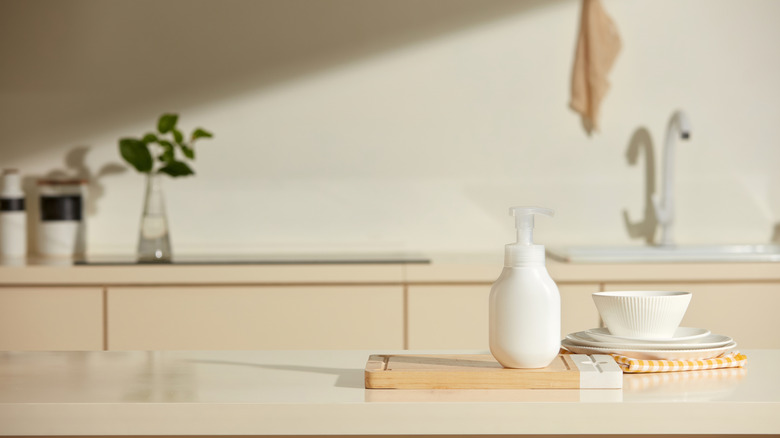The Historic Kitchen Feature HGTV's Erin Napier Is Reviving In 2025
Home design is taking a nostalgic turn, with retro and classic styles making a big comeback in the trend cycle. When it comes to blending classic charm with modern comfort, HGTV's "Home Town" star is an expert — and if you've ever wondered what Erin Napier's house really looks like inside, you'll find the perfect balance of traditional elements and contemporary design. Napier's latest project further proves her skill for bringing past design concepts back to life, as she sets out to revive a historic kitchen feature in her client's home — a scullery. Sculleries were once staples in Victorian homes to keep kitchen messes out of sight, but today, they're making a comeback as an extension of kitchen space for storage, food prep, and other practical chores.
As designers pay more attention to the stunning historic home design trends making a comeback, classic features like sculleries are bound to have a resurgence. Napier's take on this classic style shows how the timeless design can add both function and flair to modern kitchens. For homeowners who crave extra space for storage and kitchen work overflow, incorporating a scullery may be the ultimate solution.
Bringing classic sculleries into the modern kitchen
When Erin Napier pitched the idea of reviving a scullery on HGTV's "Home Town," her clients had never heard the term before. Napier and her husband Ben explained what a scullery in a home is, saying (via HGTV on YouTube) "It's a kitchen that's just for work." By incorporating a scullery, Napier envisioned their main kitchen as more of a social space complete with bar stool seating, a wet bar, and a china cabinet — while the scullery would hide the messy prep and cleanup. While some people may confuse this feature with a butler's pantry, which focuses more on storage and service, a scullery offers a more functional workspace where you can prep, clean, and store.
Although this feature is appealing to many homeowners, not everyone can redesign their home to include a separate scullery. Luckily, you can achieve the same benefits with some less invasive alternatives, like adding larger islands or building a storage pantry along the back wall of your kitchen. Even Napier's clients preferred her alternative solution, which didn't include a separate scullery. Instead, it involved expanding the existing kitchen by removing walls and adding two islands — creating a large, multifunctional space. Whether through a full scullery or thoughtful alternatives, the goal of reviving this historic kitchen feature remains the same — blending functionality with design for a kitchen that truly works for your lifestyle.

